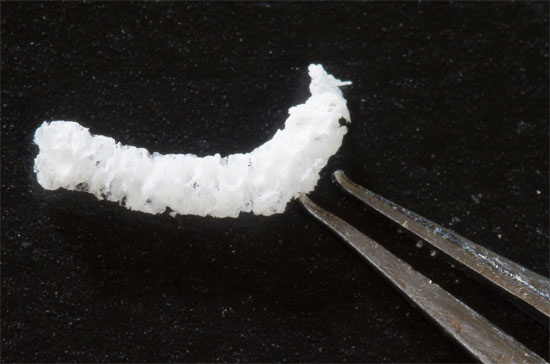Silk containing adenosine promises epilepsy
US scientists are testing tissue grafting solutions in the brains of mice with early epilepsy. Although not completely cure neurological disorders, the results show that this measure significantly reduces the number of seizures in mice.
Seizures due to epilepsy are not only dangerous but also increase the frequency with increasing severity over time. Most patients can control some of the seizures due to medication or surgery, but nearly 30% of cases cannot control the disease.

Photo: transcedo.org
Several studies have shown that adenosine , a natural molecule, has been shown to reduce neuronal stimulation, and has abnormally low concentrations in patients with epilepsy. Therefore, in their study, the expert team of Oregon's Heritage Research Institute, Oregon University of Science and Health and Tufts University in Boston designed a small piece of silk like a decomposing structure. Biologically and completely harmless, with the function of storing and releasing adenosine to limit seizures.
After transplantation, adenosine will continuously release for 10 days and dissolve itself into the body. The results showed that mice with adenosine-containing grafted mice had 4 times less recurrence of recurrence than those without the transplant.
According to scientists, although this solution is safe in mice, it needs to be thoroughly researched to prove safety in humans as well as to determine the optimal dose and duration of adenosine release.
- Found genes related to epilepsy
- US test 'dragon silk' is more durable than steel
- The world's rarest silk weaves from the silk of millions of spiders
- Spider silk - Biomaterial of the future
- Discover the mystery of spider silk
- Producing artificial spider silk lighter than cotton, more durable than steel
- Legend of the famous 'Silk Road' in history
- Spider-Man's weapons are not logical about science
- Pathology makes ordinary people become evil
- Chopin musician has epilepsy
- How was silk invented?
- Go to Van Phuc village to see how elaborate the silk production process is
 Green tea cleans teeth better than mouthwash?
Green tea cleans teeth better than mouthwash? Death kiss: This is why you should not let anyone kiss your baby's lips
Death kiss: This is why you should not let anyone kiss your baby's lips What is salmonellosis?
What is salmonellosis? Caution should be exercised when using aloe vera through eating and drinking
Caution should be exercised when using aloe vera through eating and drinking